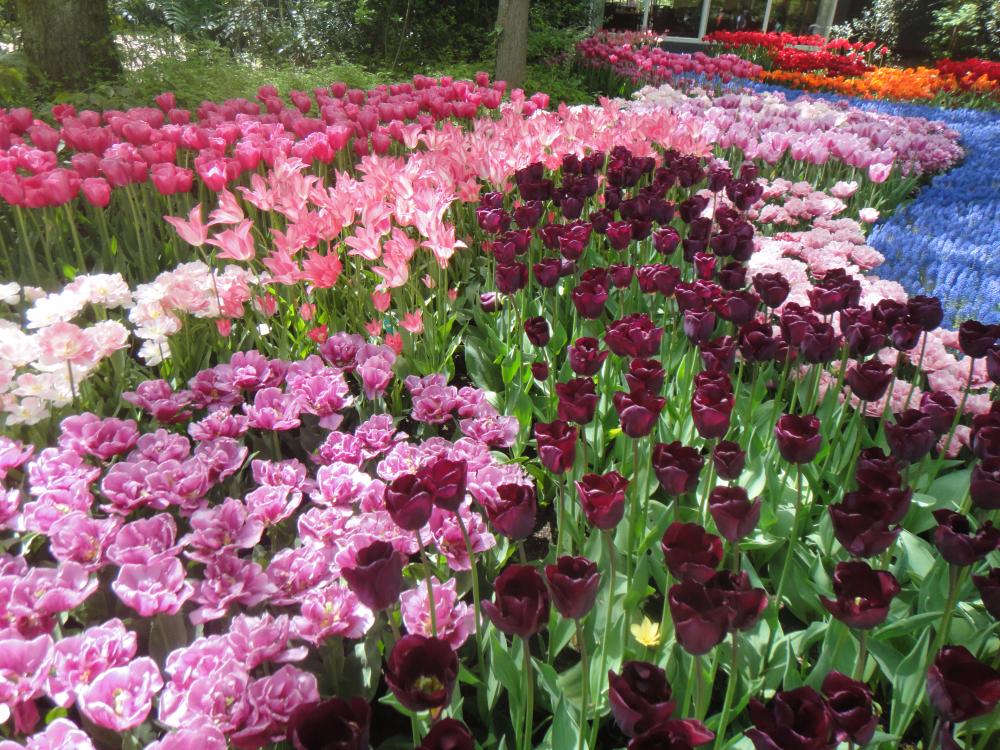Rachel Ruysch was fortunate to grow up in the 17th century Dutch Republic where for the first time in Europe there was no King or Catholic Church to dominate their lives and the Dutch instituted universal education. The Dutch were Protestants who won their freedom from the Catholic monarchy in 1648. They established the first middle class society and economy where home ownership, small businesses, local governments and great opportunity for all became possible. Dutch hard work and initiative enabled them to become the largest international trading economy in Europe. Their East India and West India trading companies brought goods from all the know centers of the world to Dutch ports to be distributed from there to the rest of Europe.
This brings us to the woman artists Rachel Ruysch. Her father was a Professor of Botany and Anatomy who gathered a large collection of botanical samples and other natural history items, all made possible by extensive trade. As a child Rachel helped to catalog these items and started to draw them. Her talent was encouraged and she was taught by Wm van Aelst a well known painter. The middle class Dutch people had their own homes and money and wanted to decorate their homes with art and nice things and they could. As a result a large art market soon arose. As Protestant’s they wanted small house size paintings of subjects that had meaning to them. They were the first to want landscapes of their towns and the land they owned, genre scenes of their everyday lives and still-life paintings which showed the abundance of unique foods, Chinese porcelains, silver items and a large variety of newly imported goods. Specifically they loved paintings of the new flowers which were imported in abundance.
Enter the tulip* whose bulbs were a gift from Sultan Suliman XII of Persia to the Austrian Ambassador, who gave them to a Dutch friend who planted the first bulbs in Holland in 1593. The beauty of the tulip took the Dutch by storm initiating the first real stock market which was dedicated only to tulip bulb purchases. The desire for tulip bulbs raged for years until 1637 when the market for tulips crashed. Most valued were the flames/variegated petals with an abundance of gorgeous colors and smells. They were a status symbol. Paintings of them never lost popularity in the art market. [*The name tulip came from the word ‘tulipa’, the name for the Sultan’s turban which looks like a tulip bulb.]
Ruysch became one of the most popular still life painters in Holland specializing in informal bouquets of mixed flowers which included sea shells, lizards, butterflies and other small animals which she had studied as a child in her father’s collection. Some flower painte’s used formal arrangements and some studios were set up for several painters, each one specializing in one of two flowers, which they then added to a painting. Not Rachel, she was recognized for her exquisite detail seen in each petal, leaf and object she painted. Take note of the flame/variegated tulips in Rachel’s painting. There are also roses, iris, a daisy, wheat, flies, a beetle, a bee, a butterfly, other new exotic flowers, and even small drops of dew on some of the petals of both leaves and flowers.
Rachel Ruysch enjoyed a steady patronage during her life time and received 750-1250 gilders per painting as compared to Rembrandt whose works sold for about 500 guilders. In 1693 she married Jurian Pool II, a portrait painter, and they had 10 children. Yes, she continued to paint and take care of the home. Between 1708-1716 they left Amsterdam to become Court Painters to the Elector Palatine, Johann von Paflz, at the Court of Dusseldorf. When her husband died in 1716 she returned to Amsterdam and continued to paint. She painted from the age of 15 until she was 83. She died at 86 in 1750. Eleven poets wrote poems celebrating her art when she died. Today there are somewhere between 200/250 of her paintings still extant. You can google Rachel Ruysch to see some of those 250 paintings.
Beverly Hall Smith was a professor of art history for 40 years. Since retiring with her husband Kurt to Chestertown six years ago, she has taught art history classes at WC-ALL and Chesapeake College’s Institute for Adult Learning. She is also an artist whose work is sometimes in exhibitions at Chestertown RiverArts and she paints sets for the Garfield Center for the Arts.





Anke Van Wagenberg says
As a Dutch Art Historian in Easton, I can only say Brava!